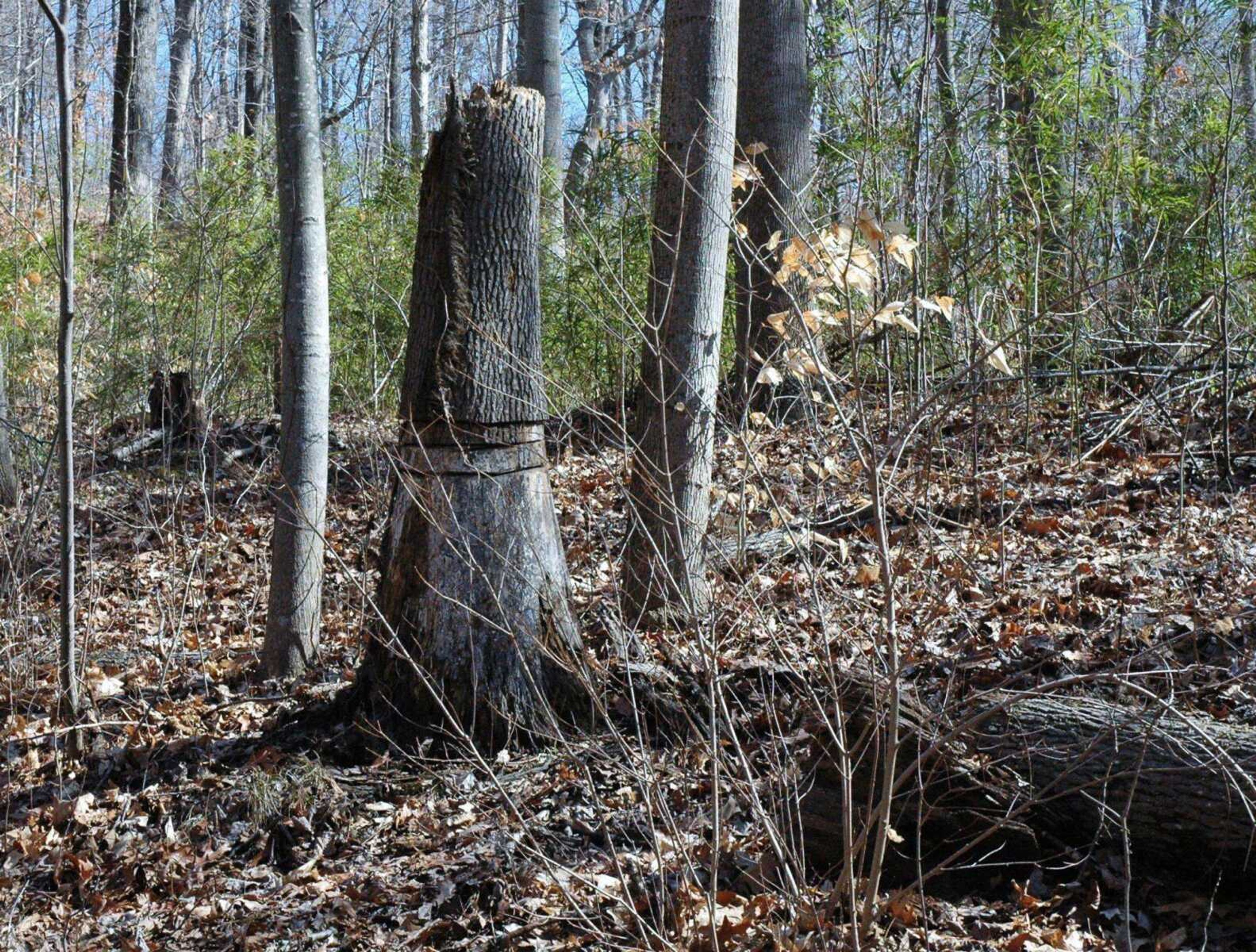This picture shows where the landowner used a chain saw to cut three rings slightly deeper than a cull tree's bark into its trunk.
The culled tree is a sweet gum that had been damaged by fire years ago and had become hollow.
Nearby young poplar trees were trying to grow up under the canopy of the sweet gum. Left alone the poplars would likely have continued to grow and become deformed from the struggle to reach sunlight during the growing season.
By "ringing" the sweet gum tree and killing it, the poplars have been released to grow straight and tall as they reach for the sunlight.
In this small area of a young forest with trees mostly younger than 25 years old, instead of three deformed trees dominating the space for several years, now there are two fine young poplars.
The practice of ring culling trees instead of cutting them down provides other benefits to the forest. As the tree withers and rots away, the limbs will fall first, leaving a snag where woodpeckers may carve out den holes.
In time, when the snag falls it will make a more "forest friendly" crash. With its limbs gone, it will do much less damage to living trees it will fall among.
Fallen logs are necessary for maintaining the health of a forest. Many small animals live in and under such logs. Fallen logs provide winter shelter and moist summer retreats for many forest animals, such as turtles, mice, chipmunks and frogs. Insects constantly eat away at the decaying log as it eventually turns to humus, enriching the forest floor.
Through the Woods is a weekly nature photo column by Aaron Horrell. Find this column at semissourian.com to order a reprint of the photo. Find more work by him at the O'Tenem Gallery.
Connect with the Southeast Missourian Newsroom:
For corrections to this story or other insights for the editor, click here. To submit a letter to the editor, click here. To learn about the Southeast Missourian’s AI Policy, click here.










